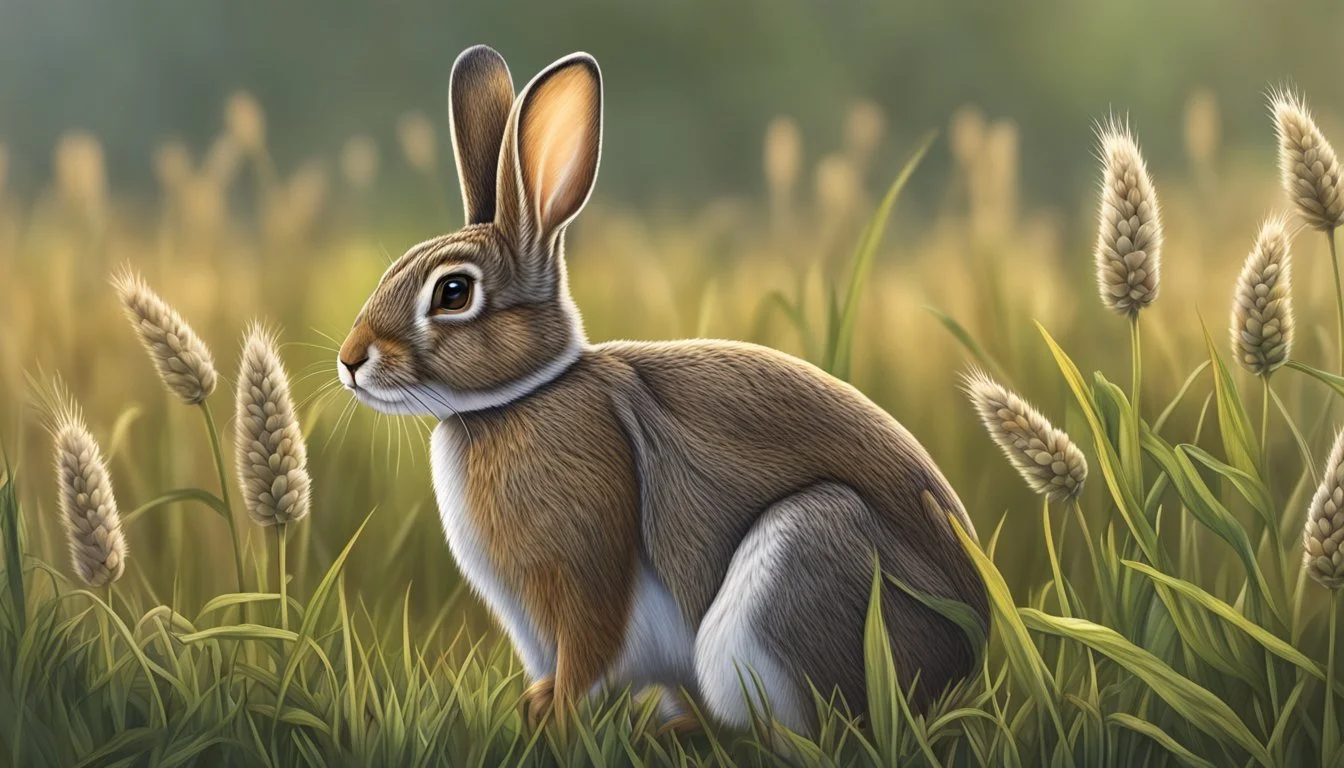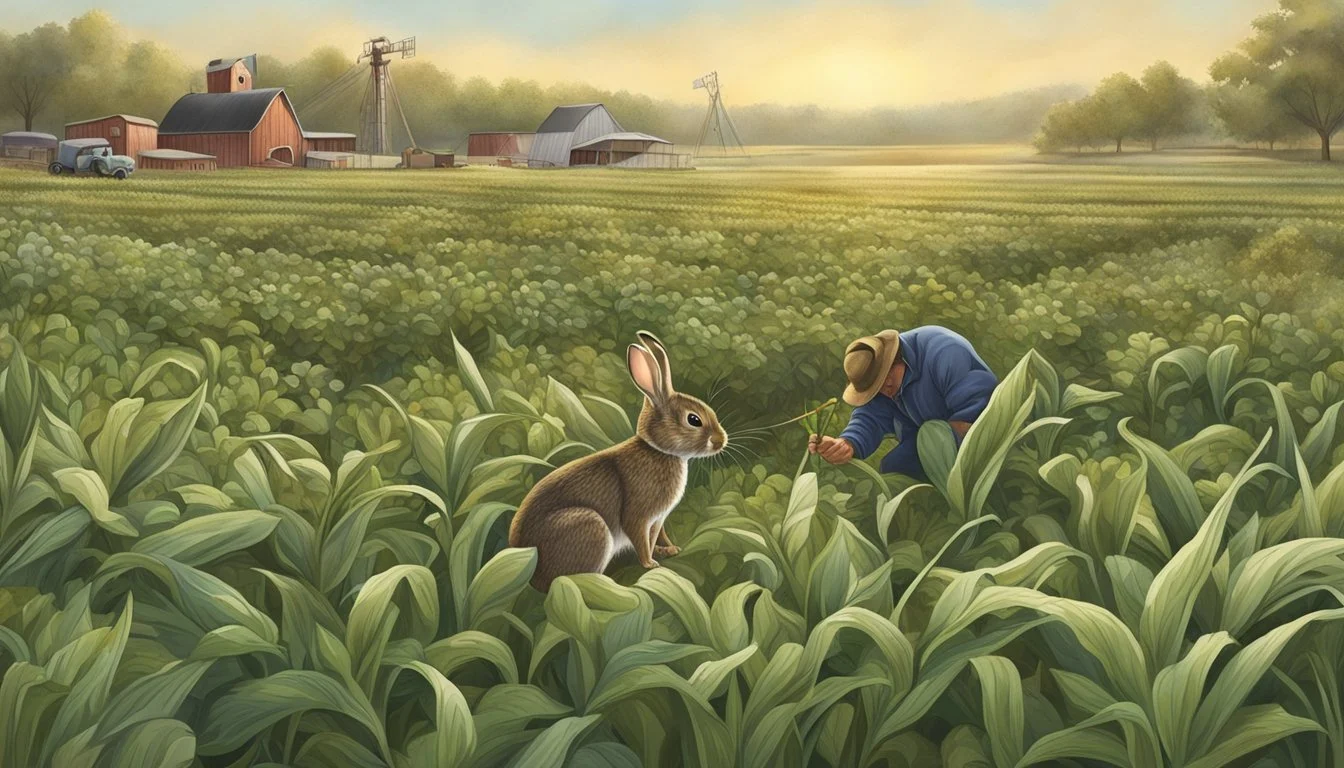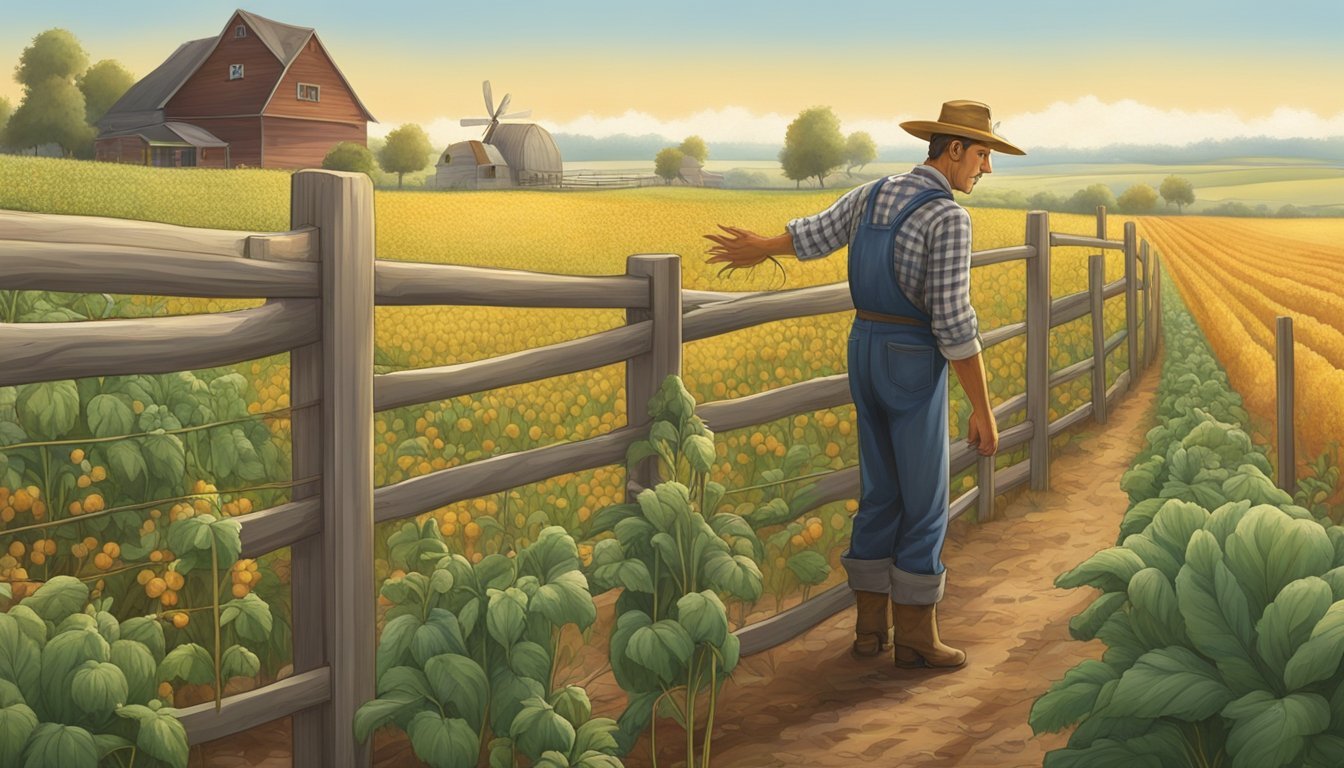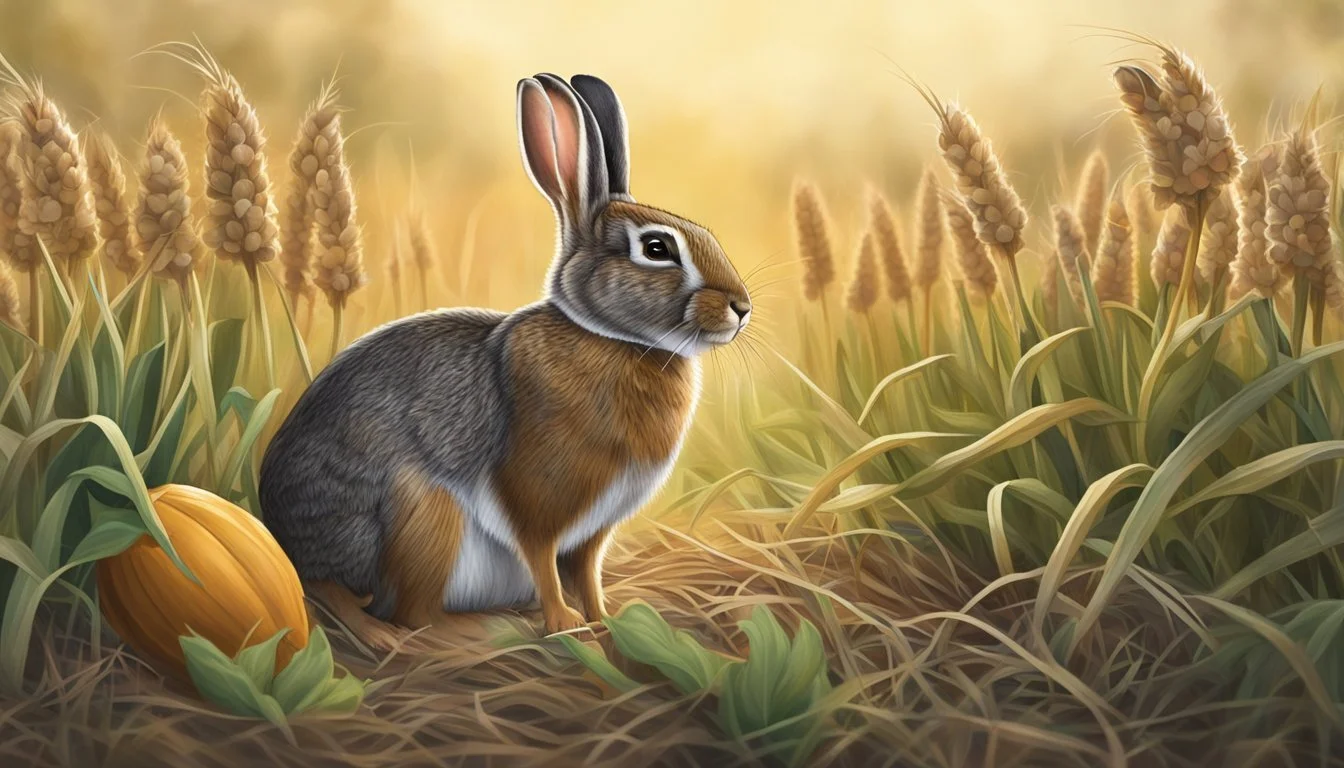Protecting Crops from Eastern Cottontail
Effective Management Strategies
Eastern cottontails are a common sight across various habitats in North America, thriving from suburban yards to farm hedgerows and forest edges. While they play a significant role in their ecosystems as both prey and herbivore, their presence can pose challenges to gardeners and farmers. These rabbits have a particular taste for various crops, which can lead to significant agricultural damage if left unchecked. Therefore, it is crucial for those cultivating land to implement strategies to protect their crops from these persistent foragers.
Understanding the habits and preferences of the eastern cottontail is essential in developing effective deterrents. These rabbits are especially active during dusk and dawn, feeding on a wide range of vegetation, including young, tender plants which are often found in gardens and farmlands. They typically prefer areas that provide cover, such as brush or tall grasses, which can make farm edges especially vulnerable to their appetites.
Protecting crops requires a multifaceted approach that can include physical barriers, habitat modification, and sometimes population management. Exclusion methods like fencing can be highly effective, as long as the materials and installation prevent rabbits from digging underneath or squeezing through gaps. Altering the landscape to reduce the cover that cottontails seek may also discourage them from settling in areas near valuable crops. These practices uphold the balance between managing wildlife and protecting agricultural interests, ensuring that the impacts of the eastern cottontail on crop production are minimized.
Eastern Cottontail Identification
Identifying the Eastern cottontail, scientifically known as Sylvilagus floridanus, is important for understanding how to protect crops from these animals. Recognizing their unique physical characteristics and typical habitats across their North American range can inform effective management strategies.
Physical Characteristics
The Eastern cottontail sports a reddish-brown to grayish-brown coat with distinctive features that set it apart from other species. It displays a round, chunky body, large brown eyes, and long, erect ears which may have slight black tips. Adults typically measure between 14 and 17 inches (35-43 centimeters) in length and weigh between 2 and 4 pounds (0.9 to 1.8 kilograms). An unmistakable physical trait is their rounded white tail, which resembles a cotton ball when they run.
Quick Identification Guide:
Coat Color: Reddish-brown or grayish-brown
Body Shape: Round and chunky
Ears: Long and erect, possible black tips
Size: 14-17 inches (35-43 cm) in length
Weight: 2-4 pounds (0.9-1.8 kg)
Tail: Rounded white tail
Habitat and Range
Eastern cottontails thrive in a variety of environments but show a strong preference for areas that provide ample cover from predators. Their habitats include bushy fence rows, thickets, fields with tall grass, and the edges of wooded areas. This species is adaptable, also found within suburban and agricultural landscapes, making them a common concern for farmers. The range of Sylvilagus floridanus extends through much of North America, from Canada down to South America, allowing for a broad canvas of ecosystems in which they may reside.
Habitat Preferences:
Bushy fence rows
Thickets
Tall grass fields
Woodland edges
Suburban areas
Agricultural landscapes
By identifying the Eastern cottontail accurately and understanding their preferred habitats, measures can be taken to mitigate the impact on crops across their extensive North American range.
Cottontail Behavior and Ecology
Cottontail rabbits exhibit specific behaviors and ecological patterns that play significant roles in their survival and reproduction. Understanding their feeding habits, breeding patterns, and predator avoidance tactics is critical for managing their impact on crops.
Feeding Habits
Eastern cottontails are primarily herbivores. They feed on a variety of plant materials including grasses, fruits, and vegetables, which can make them an issue for cultivated crops. Their feeding activity peaks during dawn and dusk to take advantage of lower light conditions, which provides some camouflage from predators.
Breeding Patterns
Breeding for Eastern cottontails begins in late winter and can continue into early fall, depending on the climate. A single female rabbit may have multiple litters each year, with each litter averaging three to eight young. This high reproductive rate is a survival strategy, compensating for the high predation rates that the species faces.
Predator Avoidance
Cottontails have developed keen survival instincts, and their habitat requirements usually include areas that offer protection, such as thickets and brush piles. Their brownish-gray fur blends into the environment, and when threatened, they often freeze and rely on their natural camouflage. If this predator avoidance measure fails, they resort to swift, zigzag running to escape harm.
Impact on Agriculture
The presence of Eastern cottontails in agricultural settings primarily leads to concerns regarding crop damage and economic considerations. These issues highlight the need for effective management strategies to protect crops and sustain farm profitability.
Crop Damage
Eastern cottontails can cause significant damage to a variety of crops by feeding on seedlings and mature plants. They commonly target vegetables, flowers, and newly planted grains, which can result in reduced yield and quality of the produce. The extent of damage can be substantial, especially when cottontail populations are high and food sources are scarce.
Affected Crops:
Vegetables (e.g., lettuce, beans)
Flowers (e.g., petunias, pansies)
Grains (e.g., soybeans, wheat)
Economic Considerations
The economic impact of Eastern cottontails on agriculture can be assessed by evaluating the cost of damaged crops and the investments required for management practices. Farmers may need to allocate funds for deterrents, fencing, or population control measures. These costs add up and can affect the overall financial stability of agricultural operations.
Cost Factors:
Loss of produce
Expenses for protective measures
Potential decrease in market value due to crop quality issues
Crop Protection Strategies
Effective crop protection against Eastern cottontails requires a multifaceted approach. Farmers must consider a variety of preventative measures, employ physical barriers, and leverage natural predators to secure their crops against these agile foragers.
Preventative Measures
Preventative strategies involve altering the landscape to reduce the resources that Eastern cottontails rely on for survival and reproduction. This includes culture rotation, which disrupts the consistent availability of preferred food sources for cottontails, and scouting, which helps in monitoring pest presence and preventing damage. Integrated strategies, combining several methods, prove to be the most effective form of crop protection.
Physical Barriers
Constructing fences is a direct method to deny cottontails access to crops. A fence needs to be tall enough to prevent jumping and buried deep enough to discourage digging. Cover for crops can also be used during peak browsing periods. Additionally, materials that create an unfavorable environment for cottontails to hide or nest can discourage their presence in agricultural areas.
Natural Predators
Eastern cottontails have several natural predators which can be allies in crop protection. Promoting habitats that attract owls, hawks, and foxes can increase the presence of these predators and help control the cottontail population. Establishing a landscape that supports these natural predators creates a self-regulating environment to mitigate the impact of cottontails on crops.
Habitat Management
Effective habitat management is crucial for protecting crops from the Eastern cottontail. It involves altering the landscape to make it less inviting for cottontails, thus minimizing crop damage, alongside managing their population numbers through ethical practices.
Habitat Modification
To effectively deter Eastern cottontails from encroaching on crops, habitat modification plays a vital role. This process entails altering the landscape to reduce the appeal of the area to cottontails. Brush piles, thickets, and other forms of cover are typically attractive to cottontails as they provide shelter and protection. To enhance crop safety, farmers can remove or relocate these features, thereby making the habitat less supportive for cottontails. Penn State Extension advises that in agricultural areas, the aim should be to create spaces where food and shelter are not easily accessible in the immediate vicinity.
Remove: Eliminate brush piles, thickets, and excess vegetation.
Maintain: Keep field borders clean and free from debris.
Restructure: Reorganize the landscape to limit areas where cottontails can hide.
Population Control
Population control is a method to keep the Eastern cottontail numbers in check, ensuring that the potential for crop damage remains low. While complete eradication is neither possible nor desirable for ecological balance, reducing their numbers can prevent the overpopulation of cottontails and associated crop damage. In conjunction with habitat modification, focused methods to control the cottontail population can involve ethical hunting and the installation of fencing to protect high-value areas.
Regulated Hunting: As indicated by Missouri's guidance on rabbit management, this can help maintain their population at a manageable level.
Fencing: Physical barriers can protect crops, especially during peak breeding times when populations may swell.
By implementing these habitat management strategies, farmers can successfully minimize crop damage due to Eastern cottontails while maintaining a balanced ecosystem.
Legal and Ethical Considerations
When engaging in activities to protect crops from the Eastern cottontail, farmers and landowners must consider both legal and ethical factors. Wildlife species are often protected by state and federal regulations, designed to ensure species conservation and biodiversity.
Legal Considerations:
Check state regulations as laws vary by location, with some requiring permits for controlling wildlife.
Familiarize oneself with the Endangered Species Act and similar legislation to avoid penalties.
Ethically, it is important to approach crop protection strategies that minimize harm to cottontails while achieving the goal of safeguarding harvests.
Ethical Considerations:
Humane Methods: Use deterrents and exclusion techniques rather than lethal methods.
Ecosystem Impact: Consider the role of cottontails in the local ecosystem to avoid disrupting the balance.
Farmers may implement fencing and habitat modification with care. There is an emphasis on techniques that are considered humane and non-lethal, such as:
Exclusion: Fencing off areas with proper materials to prevent entry.
Habitat Modification: Altering the landscape to make it less attractive to cottontails by removing thickets and brush piles.
Ultimately, it is the responsibility of individuals to take actions that are both legally compliant and ethically sound. They should aim to coexist with the Eastern cottontail while protecting their crops.
Future Perspectives
Efforts to protect crops from the Eastern cottontail rabbit must balance agricultural needs with wildlife conservation. Research has shown that intensive agricultural practices can negatively affect local wildlife populations, including the Eastern cottontail. Future research should focus on habitat management strategies that benefit both the species and farmers.
Sustainable practices such as the selection of State Acres for Wildlife Enhancement (SAFE) sites should consider the landscape context to effectively support Eastern cottontail populations. For example, integrating cover crops and buffer zones that serve as natural barriers can deter rabbits while also enhancing soil health.
One area of future research is exploring non-lethal deterrents. Encouraging the growth of native plant species that the Eastern cottontail finds unpalatable could naturally steer them away from crops. Moreover, breakthroughs in fencing materials that are effective yet less intrusive to wildlife movement can be a game-changer for both conservation and agriculture.
In summary, the pursuit of balanced ecosystems where Eastern cottontails and agriculture can coexist hinges on continued collaboration between conservationists, researchers, and farmers. By committing to research-backed conservation strategies and sustainable agricultural practices, stakeholders can work towards a future where the coexistence of Eastern cottontails and agriculture is a reality.
Frequently Asked Questions
In the battle against crop damage, understanding the behavior and control methods for Eastern cottontail rabbits is essential for farmers and gardeners.
How can farmers safeguard their crops against the foraging habits of Eastern cottontail rabbits?
Farmers can protect their crops by installing fencing materials such as chicken wire with small mesh sizes to prevent rabbits from squeezing through. Another strategy is to maintain mowed areas or buffer zones around crop fields, as cottontails prefer cover for escape.
What are effective deterrents to prevent Eastern cottontail rabbits from consuming garden plants?
Effective deterrents include the use of repellents that either taste bad to the rabbits or emit a scent that rabbits find repugnant. Non-toxic, commercial repellents can be applied directly on plants, especially those that rabbits favor. It's important to reapply these repellents after heavy rain or as new growth occurs.
Which plants are most attractive to Eastern cottontail rabbits, and how can they be protected?
Eastern cottontails are drawn to young, tender plants such as lettuce, peas, and beans. To protect these from being eaten, gardeners can use raised beds with solid barriers, or cover crops with garden fabric or wire cloches.
What are the natural predators of Eastern cottontail rabbits, and how do they impact rabbit populations?
Natural predators like hawks, foxes, and owls play a crucial role in controlling Eastern cottontail populations. Fostering a habitat that supports these predators can help manage the rabbit population, as they rely on cottontails as a primary food source.
What methods are recommended for keeping Eastern cottontail rabbits away from agricultural fields?
In addition to physical barriers, farmers may employ motion-activated sprinklers or lights to startle and deter rabbits. Additionally, habitat alteration that removes brush piles, stone heaps, and tall grasses will make the area less attractive to cottontails.
How does the diet of an Eastern cottontail rabbit affect its habitat preferences near crop areas?
Eastern cottontail rabbits prefer areas with abundant food sources, such as clover, grasses, and crops. They typically reside in areas where this vegetation is plentiful and provides both food and cover. Consequently, managing vegetation around crop areas can influence rabbit habitation and reduce crop damage.









